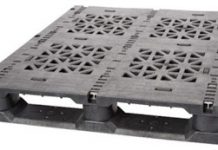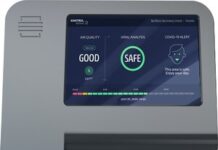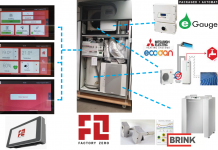I’ve begun acting as a consultant to the Colorado Energy Efficiency Business Coalition (CEEBC) in a rulemaking docket for Demand Side Management (DSM) case before the Colorado Public Utilities Commission (PUC). In the 2007 Legislative session, the Colorado legislature passed enabling legislation calling for utility-wide Demand Side Management programs for natural gas utilities. To date, all DSM in Colorado has been focused on low income customers.
Crucially, the legislation allows for non-energy benefits, such as increased comfort, economic multiplier effects (i.e. jobs), and reduced volatility of energy costs be included in the evaluation of the benefits of programs. Since financial benefits are a relatively small part of net benefit, this allows the implementation of a large number of DSM programs with large net benefit, but which might have only small financial benefits. The Commission will effectively decide whether those programs will be implemented in this rulemaking. The utilities in question, led by Xcel Energy (NYSE: XEL), are currently only willing to include minor, easily quantified non-energy benefits, such as water savings in an energy-efficient dishwasher.
A Seemingly Easy Decision
Suppose you have the following choice for your home or business:
A. Spend $1000 to get improved indoor air quality, fewer drafts and hot or cold spots, quieter operation of equipment, less condensation on windows and walls (and associated mold growth), less noise from outside the building, a reduction in greenhouse gas emissions, an increase in the local economy, less air pollution, increased national energy security, and $15 per month for ten years.
B. Spend $750 and save $15 a month on your utility bill for ten years. You might or might not get some of the benefits in A, but they will be smaller than the benefits you would have gotten with A (except for the cash.)
C. Keep the money.
D. Spend $350 and save $7.50 a month on your utility bill for ten years. Like B, you may get some small, unknown fraction of the other benefits in A.
Utilities Chose C.
Until a few years ago, electricity regulators and legislators were choosing C on behalf of their customers, by meeting increasing demand for energy with new power generation. They are now starting to realize that the cash-only internal rate or returns for options A and B are quite attractive. (These returns are 11% and 19%, respectively, similar to buying a CD with that interest rate.) Because the non-financial benefits of A are difficult to quantify, most regulators only consider the cash, and pick option B.
Option B is a traditional DSM program, which bases the decisions on which actions to take solely on the financial impact. It is also essentially what Xcel Energy (NYSE: XEL) is arguing for in the utilities commission docket, despite their widely announced proposed doubling of their DSM target. What Xcel does not mention is that the current DSM program (choice D, in the above analogy), was the result of a settlement agreement made with environmental groups who had opposed a massive coal-fired power plant in a previous PUC docket. In my personal opinion, the environmental groups got very little for their concession of not opposing the 750 MW Comanche 3 power plant (now under construction), but at the time, they faced a Public Utilities Commission hostile to environmental concerns, and they may have been lucky to get as much as they did. I seriously doubt any would have agreed to the settlement in today’s political climate.
"A" Excellent Choice
Fortunately, legislators and regulators are awakening to the advantages of A. The New York State Energy Research and Development Authority (NYSERDA) has been conducting a continuing evaluation of their ongoing Energy $mart DSM program, which means that they chose A, and then went on to quantify the non-cash benefits. Because of the controversy about valuing emissions, the environmental benefits were not included in this study, but they used a series of questions similar to the poll above, and some advanced statistical analysis, to figure out what people would actually be willing to pay for the other benefits.
What they found was that the net present value of all benefits from the Energy $mart program were worth approximately twice as much as they would seem to be worth when measured on a traditional, cash-only basis (called "Scenario 1 TMET" in the study.) And this does not include the environmental benefits listed in A, nor energy security. In other words, people would be willing to pay well over twice as much for the benefits in option A, as they would be willing to pay for the cash alone.
Conclusion
Studying non-energy benefits is still an inexact science, and one of the things CEEBC is pushing for in the PUC docket is to make sure that we do our own study of non-energy benefits in Colorado, so we can better understand what we are getting (besides an excellent financial return) for our money. That understanding should lead to more DSM programs, because the results will be better and higher valued as people begin to recognize the true worth of energy efficiency. This has already benefited the companies, such as Energy Service Contractors, and providers of energy efficient products and the controls which enable them as more and more individuals, businesses, and utilities (gently prodded by the regulators), begin to choose A.
DISCLOSURE: Tom Konrad and/or his clients have positions in these companies mentioned here: XEL. (They’re actually not bad, as utilities go, although they have been much more active on the renewable energy and energy efficiency front in Minnesota than they have been in Colorado. This is, in my opinion, mainly the result to the proactive stance of regulators.)
DISCLAIMER: The information and trades provided here are for informational purposes only and are not a solicitation to buy or sell any of these securities. Investing involves substantial risk and you should evaluate your own risk levels before you make any investment. Past results are not an indication of future performance. Please take the time to read the full disclaimer here.









While your blog is near target it misses the mark when you make general statements with lack of evidence of references. For example, you the article says in paragraph 2, line 2;
“Since financial benefits are a relatively small part of net benefit, this allows the implementation of a large number of DSM programs with large net benefit, but which might have only small financial benefits”.
1)Can you cite your evidence that allows you to say such a stong statement as “since financial benefits are small”?
2) there are standard financial tools that financial managers use to measure risk, NPV, FV, IRR and discounted cash flow. Additional discussion should be earmarked on how to apply the tools to real life calculations.
Thanks for the time and your article.
1) The evidence you are looking for is in the NYSERDA study I linked to in the article.
2) That discussion is also contained in the study. However, using time value of money type tools complicates the issue overmuch. The methodology using in the study is based on a statistical analysis of survey responses asking the respondents to rate the relative value to them of the cash flows from the energy efficiency imporvements compared to the non-financial benefit. These survey responses use the respondent’s own internal discount rates to apply the comparison, and so effectively establish a demand curve for these non-energy benefits.
In short, people are willing to pay a lot more for the increased comfort due to better insulation than they are willing to pay for the cost savings. Since people are willing to pay more for comfort, it is “worth” more. The statistical analysis is used to put numbers on how much more people are willing to pay.
One more thought on the last comment: If comfort were not more valuable than financial savings, would Jimmy Carter have received so much ridicule when he asked people to turn down the thermostat and wear a sweater?